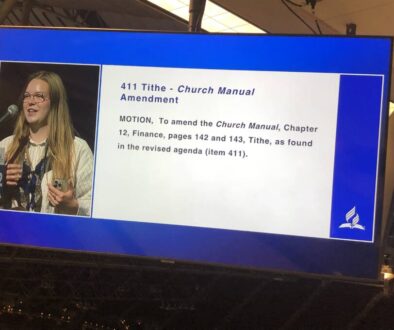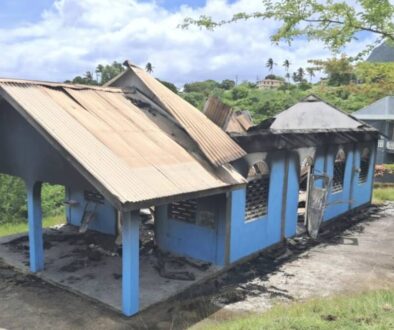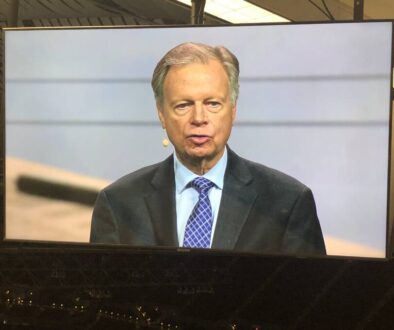New Stop Smoking Program Introduced for Adventist Health Outreach
by Monte Sahlin
By AT News Team, July 15, 2014
The Five Day Plan to Stop Smoking, which began in 1959, is the largest single impact that Adventist outreach has had on America. About 20 years ago it was replaced by the Breathe Free Plan because many things had changed in both the tobacco problem and the methods available. Last week the denomination's Health Ministries Department rolled out a new and revised version of the Breath Free Plan; the third era in Adventist efforts to help people fight tobacco addiction.
This is a completely new approach, explained Dr. Daniel Handysides, the professor in the School of Public Health at Loma Linda University, who developed the new program. Attitudes toward smoking have changed drastically in recent years, said Handysides. "You cannot find a smoker in the world that does not know that cigarettes cause cancer." They want to quit, "so our old model of lecture and fear doesn't work."
The new program takes a relational approach with an emphasis on a support group and helping smokers find new friends who are non-smokers. Handysides challenged Adventists to smile at smokers when they come to church and provide a smoking area outside each church building.
The new program combines up-to-date science, an open-source web site with resources and personal relationships. The introductory phase takes eight days and then it shifts to weekly and later monthly meetings for as long as the smokers need the support.
"It is my goal that every one of our churches will reach the point where they have smoking sections outside," he said. "People should be able to feel comfortable coming to a Seventh-day Adventist church as a smoker." For example, the New Hope Church in Fulton, Maryland, has kept a freestanding ashtray outside its main entrance for years. Many non-members attend there each Sabbath.
Two years ago Handysides, together with his wife, a family nurse practitioner, were sent to Abu Dhabi in the United Arab Emirates to conduct stop smoking classes. When he looked at the current Breathe Free materials available at the time, he realized that an entirely new approach was needed. It has been tested in Abu Dhabi for 18 months.
The English-language materials are available at www.breathefree2.com and a Spanish version will be available next month. Translation into Russian, Polish and Finnish is underway.
The new program was introduced last week at a global meeting on health outreach in Geneva, Switzerland, convened by the Health Ministries Department of the denomination's General Conference (GC). Nearly 1,200 people attended, including health professionals, local church volunteers, conference staff and church administrators. The focus of the meeting was a goal that the GC has been promoting for more than a decade–that every local church around the world should develop a community health center. This means opening a fitness club and offering classes on how to manage stress, a healthy diet and the new stop smoking program.
Many of the presentations shared the latest research on non-communicable diseases; the health problems that result from poor diet and an unhealthy lifestyle. A new documentary on the Adventist contribution to health was shared by Martin Doblmeier, a producer for the Public Broadcasting System (PBS) in the U.S. who is not a church member. Dr. Gary Fraser, who directs the Adventist Health Study for Loma Linda University under a National Institutes of Health grant, shared an update of the findings from this massive research project.
Dr. Anselm Hennis, a top staff member at the Pan-American Health Organization (the World Health Organization regional agency for the Americas), in a keynote address, told the assembly that Adventists need to share their expertise on health with the rest of the world. "We are sitting on an evolving epidemic on all levels," he stated.
Dr. David Williams, an Adventist who teaches public health and sociology at Harvard University, asked, "What does a comprehensive health ministry look like?" He used the example of Dr. John H. Kellogg and the medical and nursing students from Battle Creek College starting a mission in Chicago in 1893, a model specifically commended by Ellen G. White, one of the denomination's cofounders. A clinic treated the medical needs of the poor in the inner city. A homeless shelter, a soup kitchen, a halfway house and an employment program were all started as well as visiting nurses that went to the homes of the sick and ministerial students and Bible workers who taught religion classes in small groups. This approach won high praise from the public health officials of the day, Williams pointed out. It is still an excellent model and widely needed as the world becomes more urbanized.
Pastor Ted Wilson, the GC president, spoke on Sabbath at the close of the meeting. He urged the participants to go back to their home communities and conferences and share and implement what they had learned.
This story is based on news releases from the Adventist News Network (ANN), the official news service of the denomination. Eight bulletins were issued on a daily basis through July 12 with reporting by Andrew McChesney, news editor of the Adventist Review, and Marcus Chapman, communications director for the School of Public Health at Loma Linda University. The Adventist Review published a special double-issue this week on the same themes with articles from a number of the presenters at the meeting.



